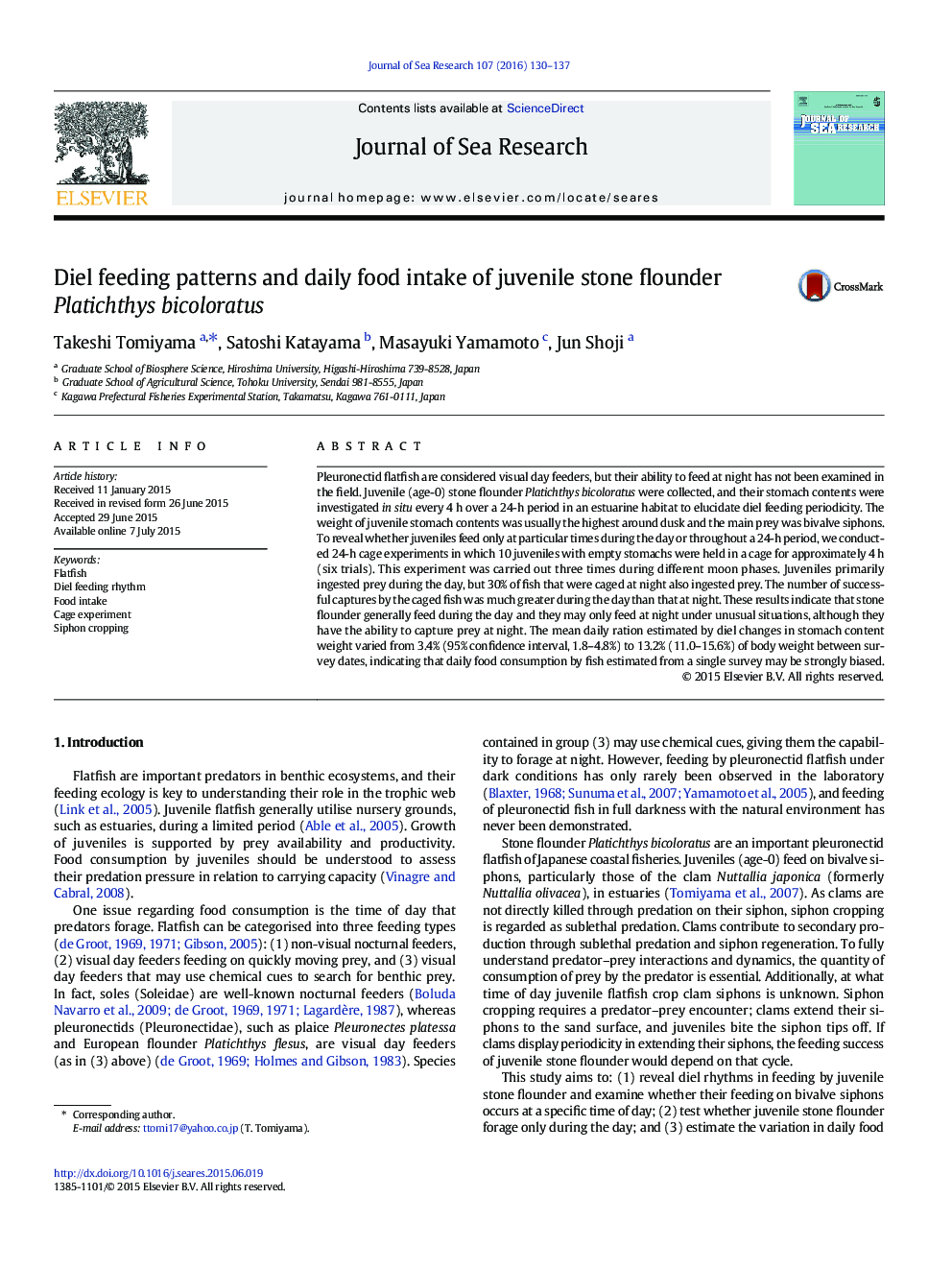| کد مقاله | کد نشریه | سال انتشار | مقاله انگلیسی | نسخه تمام متن |
|---|---|---|---|---|
| 4549644 | 1328088 | 2016 | 8 صفحه PDF | دانلود رایگان |

• Diel feeding periodicity of juvenile stone flounder was investigated in estuarine habitats.
• Juveniles fed mainly on bivalve siphons especially around high tide during the daytime.
• In situ caging experiment revealed that juveniles can capture prey in the dark.
• Daily food intake greatly varied from 3% to 13% of body weight among dates and sites.
Pleuronectid flatfish are considered visual day feeders, but their ability to feed at night has not been examined in the field. Juvenile (age-0) stone flounder Platichthys bicoloratus were collected, and their stomach contents were investigated in situ every 4 h over a 24-h period in an estuarine habitat to elucidate diel feeding periodicity. The weight of juvenile stomach contents was usually the highest around dusk and the main prey was bivalve siphons. To reveal whether juveniles feed only at particular times during the day or throughout a 24-h period, we conducted 24-h cage experiments in which 10 juveniles with empty stomachs were held in a cage for approximately 4 h (six trials). This experiment was carried out three times during different moon phases. Juveniles primarily ingested prey during the day, but 30% of fish that were caged at night also ingested prey. The number of successful captures by the caged fish was much greater during the day than that at night. These results indicate that stone flounder generally feed during the day and they may only feed at night under unusual situations, although they have the ability to capture prey at night. The mean daily ration estimated by diel changes in stomach content weight varied from 3.4% (95% confidence interval, 1.8–4.8%) to 13.2% (11.0–15.6%) of body weight between survey dates, indicating that daily food consumption by fish estimated from a single survey may be strongly biased.
Figure optionsDownload as PowerPoint slide
Journal: Journal of Sea Research - Volume 107, Part 1, January 2016, Pages 130–137